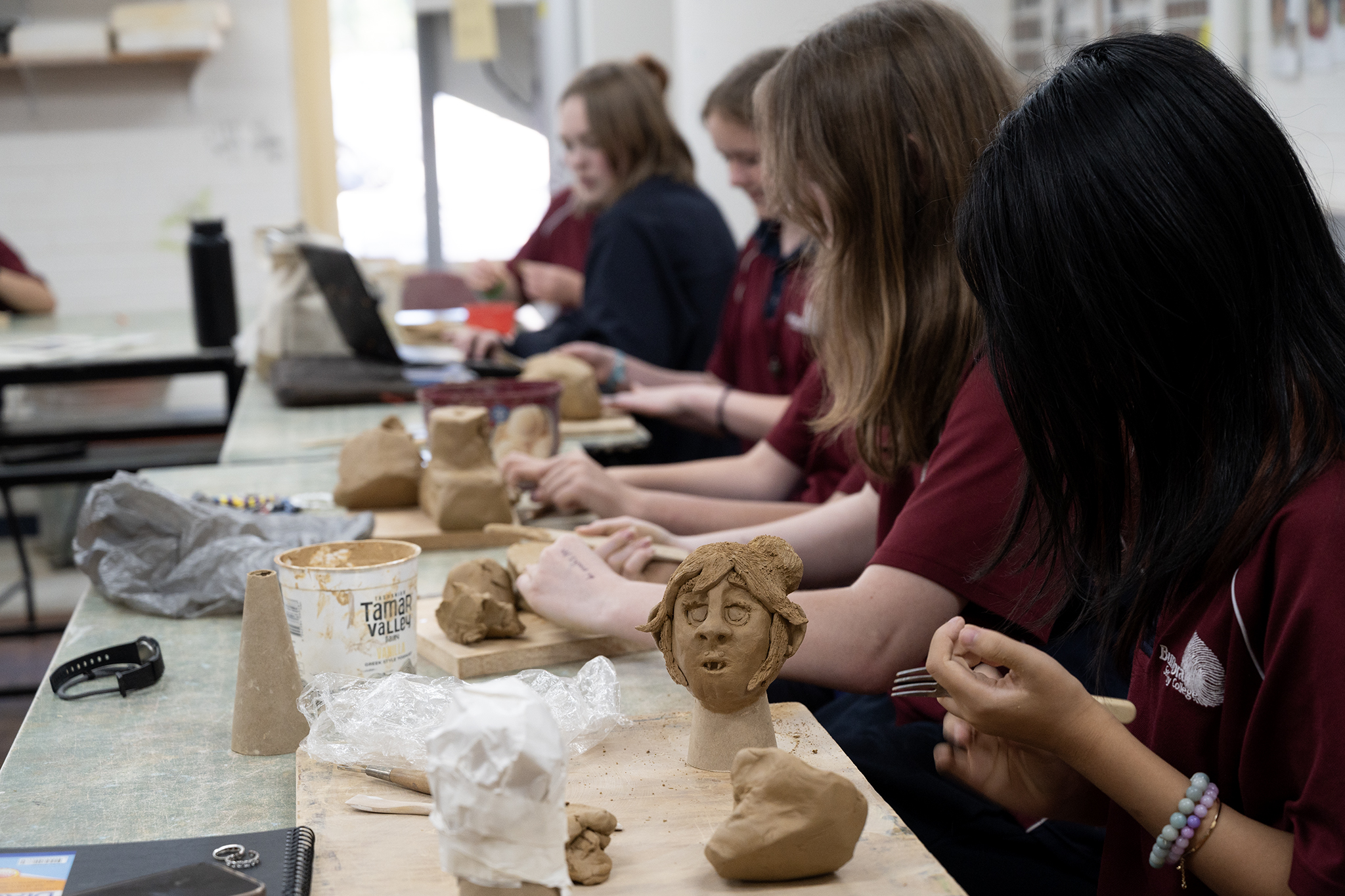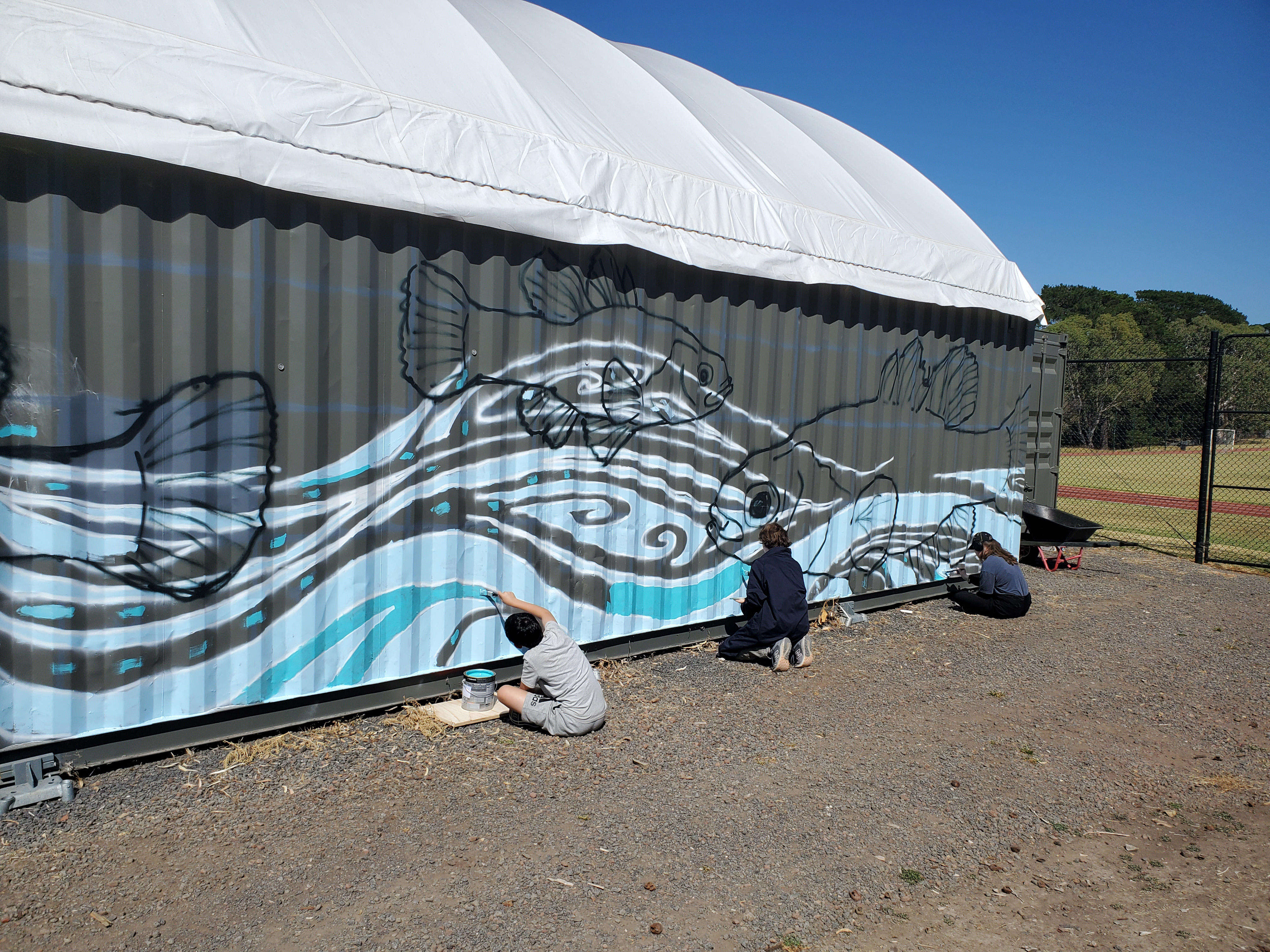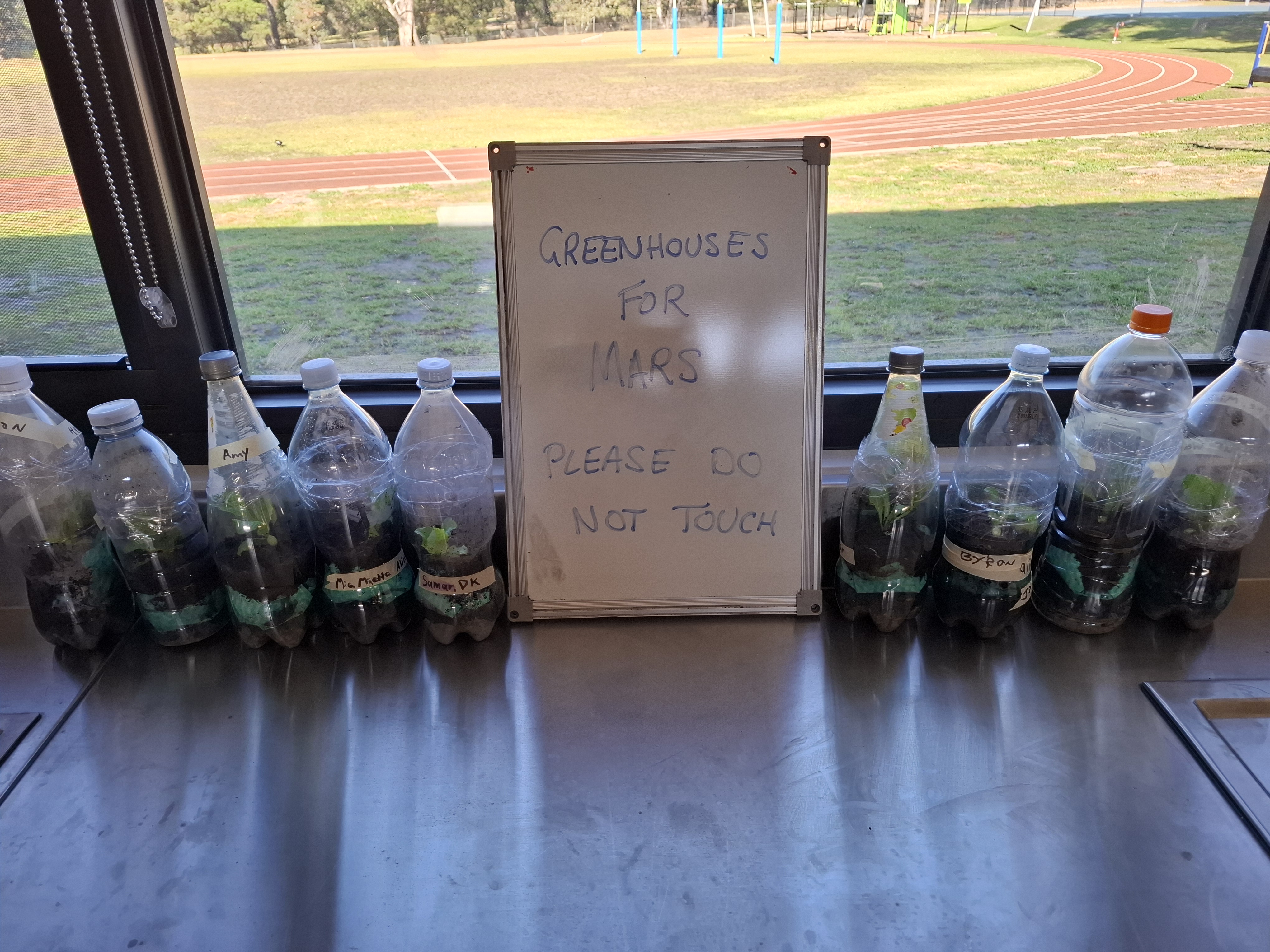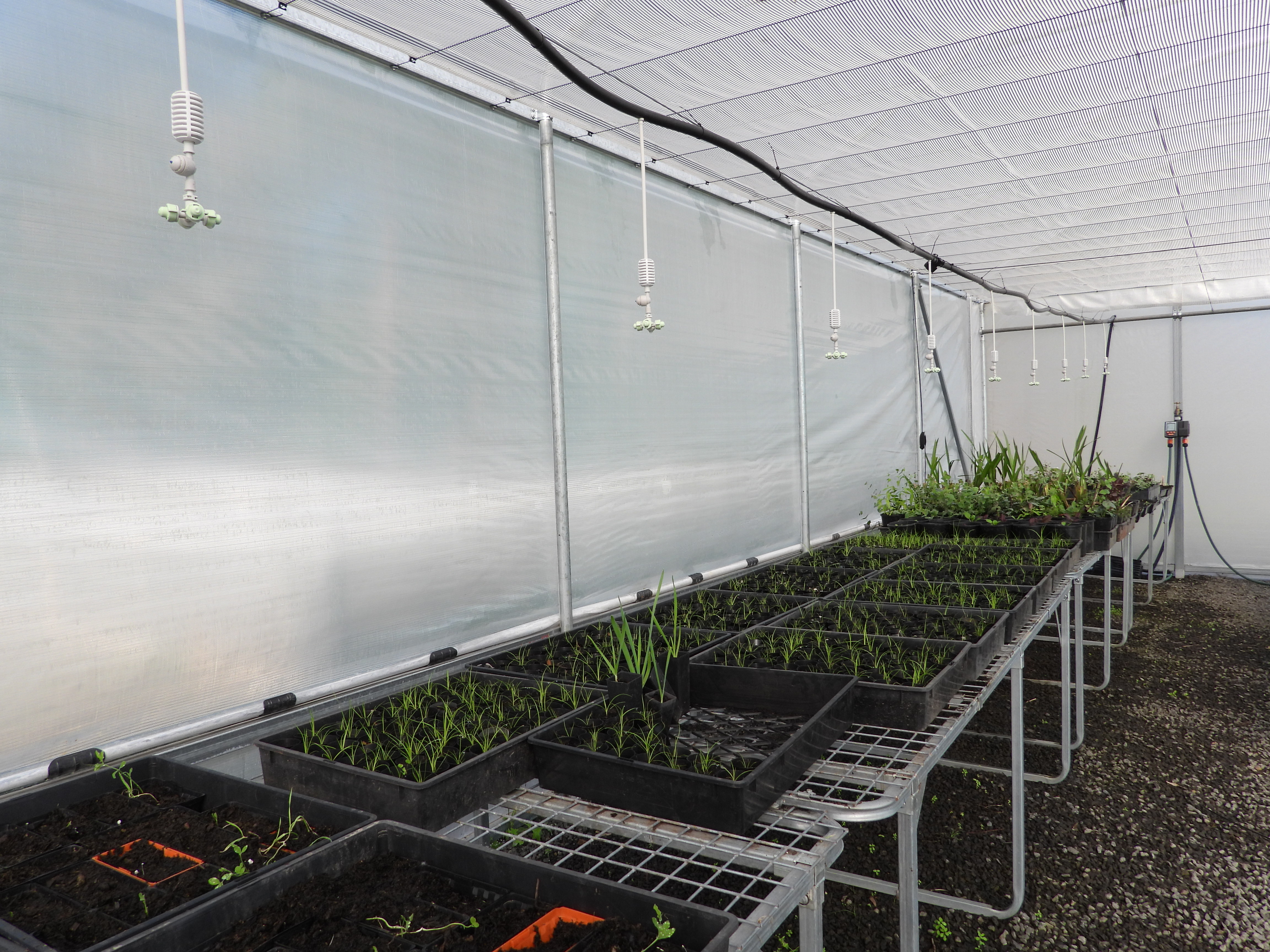Published 12 Jun 2025
Voice, choice and control: an inquiry model - Bundoora Secondary College
Engaged with colleagues, school and the broader community
Anesti Anestis – Principal
Bundoora Secondary College
Schools and early childhood services across Victoria continue to provide quality learning experiences across all levels. The VIT’s Professional Practice team is privileged to see this work firsthand on visits to workplaces around the state. Here is just one example spotlighting the great work happening in a Victorian secondary school.
Anesti Anestis is a secondary school teacher and principal at Bundoora Secondary College (BSC), a school in Melbourne’s northern suburbs. We spoke to Anesti about how the school leadership team implemented a bespoke Empowerment Learning Model (ELM), allowing teachers to develop their pedagogical skills and empowering students to use their voice, choice and control of what they learn at school.
Q: Can you give some background to the development of your approach to the initiative including any research or established models / strategies that your approach is based upon?
BSC has gone through many changes over the last 50 years, including catering to rapid expansion in the local area. Despite the increasing population, the establishment of several new schools has led to a decline in enrolments at BSC.
Following this drop in enrolments, our team began looking at offering something different to students, and as a result, the school decided to implement a bespoke ELM.
We needed to explore the best fit for our school community and so I set up a working group of interested teachers to research models that complement the ELM including Montessori, the Measures of Effective Teaching (MET) approach and the Khan Lab, to name a few.
Our teachers spent the year asking themselves what they wanted to achieve, and how this would inform the narrative and vision. A combination of these evidence-based approaches now represents the BSC model.
Our model is adopted from Templestowe College’s ELM, but with a BSC twist – it’s about providing students with a choice in what they learn, giving them a say in their own educational journey.
The BSC ELM is a vertical learning program, which means that students in years 8, 9 and 10 can be in the same class based on their choice of subject. For these year levels, 50% of their subjects have an inquiry focus and students are working in an active, student-driven environment to solve real world problems.
This approach fosters critical thinking, teamwork and self-directed learning. The topics covered in these subjects promote thinking across curriculum areas, helping students develop a deep understanding of the material, while applying their knowledge in practical and meaningful ways.
Since implementing the ELM and the new focus on a pedagogical approach centred around an inquiry model, enrolments at BSC have seen consistent growth.
Q: What structural things are in place to ensure that the initiative or program has its best chance at success?
Our school follows a servant leadership model, and I am supported by multiple assistant principals (APs). Our principal team are involved with the school’s operations and our APs teach in the classroom, in addition to maintaining their portfolios.
Each AP’s portfolio is based on the unique needs of our school community, and this leadership model demands a strong approach to implementation and execution through modelling and demonstration. Our principal team is supported by leading teachers and education support staff, who are key to the success of this approach.
A key pillar of our school is ensuring that our students have a clear voice and multiple opportunities to exercise their agency to shape their programs. Some examples of these opportunities include
- a weekly student leadership group who coordinates events and initiatives for the whole school
- student-led assemblies
- student proposals for new subjects
- our student employment program, and
- student membership on School Council.
There are also less-formal opportunities for students to share their experiences through regular surveys and teachers who are curious to unpack student experiences to continuously improve our programs.
These opportunities lead to students developing a sense of ownership in the school and their programs. The students also build skills in leadership, communication and planning to influence change. Some recent successful examples of student agency are BSC moving to an optional student uniform (initiated by the student leaders) and six new subjects being offered in 2026, which were shortlisted from 31 student applications.


Q: How has the program or initiative built staff capability, or contributed to the learning and development of staff? Please provide some illustrative examples if appropriate.
Teachers undertake a lot of professional development to work in this model. The school leaders take on a mentor role and lead small Professional Development Practice (PDP) teams so that our teachers are given the support they need in a small group setting.
The focus of these meetings is learning and growth, rather than administrative duties. If teachers can meet during the school day, they will schedule it weekly. This takes place in addition to whole staff meetings each Tuesday that focus on the climate for learning in our school.
Our teachers have access to ongoing support around student management behaviour practices and supporting diverse learners, in particular, neurodiverse students.
Q: Does your school or service have any future plans to build on the success of the approach?
In many aspects, we are still in the early stages of the ELM. Since its implementation, our teachers have been closely monitoring student learning data such as Victorian Curriculum data, Attitudes to School survey results and NAPLAN results. The data is consistently improving and feedback from our school community has been positive. We are also finding there is growing interest from parents and students willing to travel to the area for our diverse offering.
From here, our leadership team want to further refine our ELM so there is consistency in teaching and learning. This will ensure everyone has a clear understanding of what it means to be part of an empowerment school.
Q: Please provide any additional information that you believe is relevant but was not covered by the questions above.
In summary, we are constantly asking ourselves, “how do we use our school as a lever to really help students engage with their learning and discover all the pathways that are available along the way?”
We spend a lot of time ensuring teachers have a really solid understanding of the school's pedagogical approach through ongoing collaboration and professional development, which continues to deliver great outcomes for both learners and our team.


